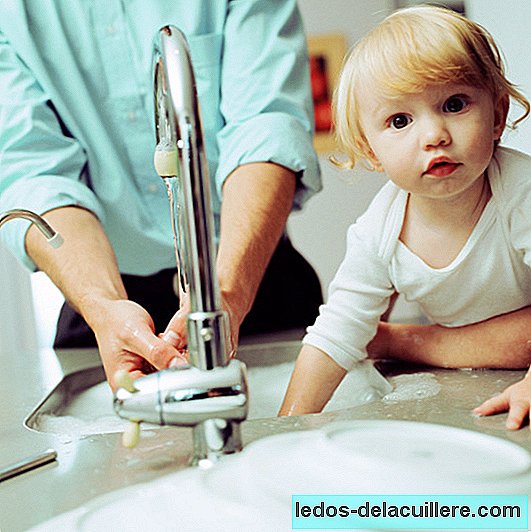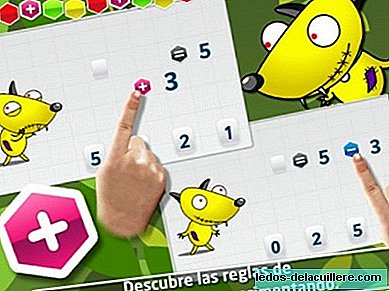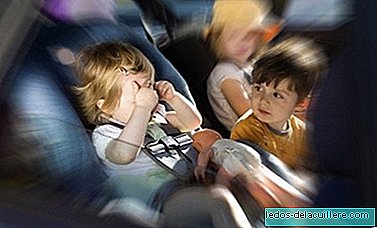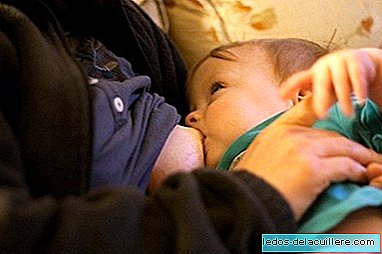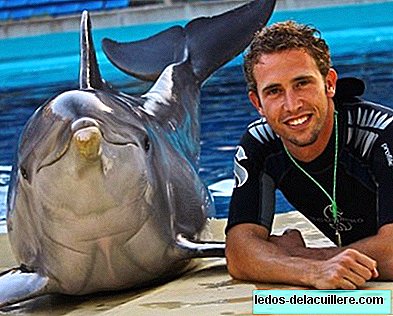
In Peques and Más we are pleased to introduce you to Antonio Martínez marine mammal trainer at the Aquarium Zoo in Madrid. Antonio has a university diploma from ATZA Technical Assistant of Zoos and Aquariums by the Veterinary Faculty of Madrid. He speaks English, Italian and French and has completed several courses on marine mammals. It also has the diving title. Antonio has worked at the Zeehondencreche Pieterburen Seal Recovery Center (Netherlands), with the Omacha Foundation in the Amazon studying river dolphins, in Marineland (France) working with orcas, in Selwo Marina (Málaga), in Faunia (Madrid) and currently at the Zoo Aquarium in Madrid. You can follow Antonio's activities in the @AntonioDelfines account where he wishes us good morning every day surrounded by the dolphins with which he works at the Zoo. We leave you with Antonio's answers to learn a little more about the activities of a dolphin trainer and the care and care he dedicates to animals.
What are your functions as a marine mammal trainer at the Madrid Aquarium Zoo?
The entire team performs the daily tasks of a Dolphinarium. Preparation of animal diets, cleaning of the facilities, water quality control, recording of daily data of each animal, playing with them as environmental enrichment, attention to the public after the exhibitions, etc.

What animals can be seen at the Zoo Aquarium in Madrid
The Madrid Aquarium Zoo has 5,000 animals of some 600 different species among which we can find large land and marine mammals, some as emblematic as the giant panda, the Indian and white rhinoceros, the Asian elephant, the koala, gorillas, orangutans, dolphins, sharks of three different species and a great variety representative of the five continents.
We learn to synchronize in jumps and adapt to the needs and behaviors of dolphins
How do you get that complicity with the dolphins
We work with a training system that applies equally in psychology with people, called operant conditioning in which, through enrichment, their learning is reinforced.
How is the coexistence in the water with the animals
From my point of view, it is the most beautiful part of our work. The time you spend with them in the water, in an environment that in itself is so different from what we are used to. Watching how they move, swimming with them and, above all, learning from them is very satisfying. We establish a very strong physical and emotional bond with them.
What training do you have to do and what are the physical demands that are required for this job?
I always say that it depends a lot on the person, but the ideal is to play sports and stay fit to be able to lift weight, swim, dive. It is a much more physical job than some people think, and keeping fit is in my opinion, very important.

What are the stunts that are performed and who ends up doing more in the water
The movements that dolphins make, such as jumps, somersaults, etc. they are behaviors that animals perform in their natural environment. What we do is learn to collaborate with them, to synchronize in the jumps and adapt to their needs and behaviors.
I love dolphins since I was little
With what animal would you like to get in the water
I love dolphins since I was little and being with them in the water has always been a dream that I have been able to fulfill but I would like one day to dive with the leopard seal.
What activities do you do for children and how do children participate in exhibitions?
The Madrid Aquarium Zoo and its Department of Education carry out many activities for children and the general public. From summer workshops, Christmas and Easter, where children spend whole days learning and knowing in situ the work of an animal caretaker and our conservation work to courses and conferences for university students and the general public.
The children, sometimes, participate with us in the exhibition and have the possibility of approaching with us the dolphins and knowing more things about them, face to face.

What training is necessary to be a mammalian trainer
There is no specific training, although any career such as biology, psychology, marine sciences, veterinary etc. It is always recommended.
A marine mammal trainer learns over the years, with the day-to-day experience with animals. The theory can be learned by anyone, but knowing how to apply it is only learned by dedicating your life to them.
It is also important to take courses, attend training conferences, study languages, scuba diving title, swimming, etc.
What is the future of a mammalian coach
The future of a coach depends on the person and their needs. No one can know their future one hundred percent. Some trainers soon retire from daily work in the water and become part of the management and conservation team of the marine mammal department of the park. And I've seen coaches with more than forty years jumping, swimming and diving with the same skills as a younger coach. So it all depends on what one takes care of.
And so far the interview with Antonio Martínez, dolphin trainer at the Zoo Aquarium in Madrid. I thank you for the explanations you have offered us and for telling us how you work hard to get the thousands of smiles and faces of admiration that cause him and his companions every year in children with its aquatic activities in the Zoo.


